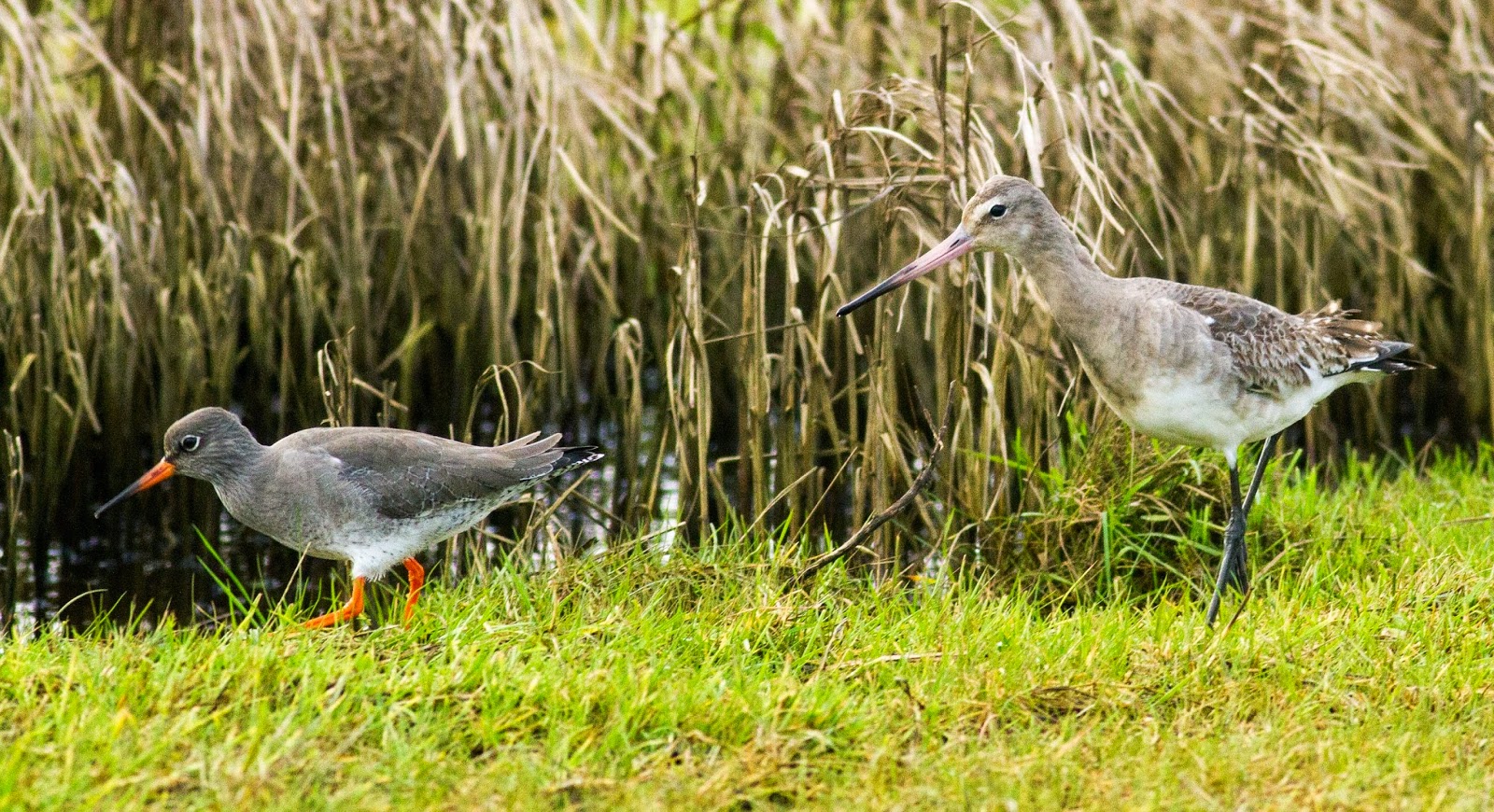We start off the New Year with a bang in the form of two new birds. They're really record shots due to the long distances and generally poor light, but I'm pleased I made the effort to get out to Blashford Lakes today.
Black-Necked Grebe
I've gone to both Longham and Blashford several times and have always missed this bird. Now I know why, it's extremely small, and not that much bigger than a Little Grebe. For some reason I always thought it was Great Crested Grebe size.
This one was kindly pointed out to me by a nearby gentlemen who was intently studying all the gulls on the lake. While I was able to get a decent viewing through my binoculars, the following shot is for record purposes only :)
Only 130 birds winter in the UK, making them relatively rare. They're a lot more noticeable in Summer, due to their bright plumage, but outside of breeding their quite dull, save for their bright red eyes. They feed on a variety of foods, from small fishes to crustaceans and will also take insects. This one was continually diving, making him quite a challenge to spot.
Not the greatest shot, but the white cheek patch is very recognisable.
Green Sandpiper
About 10 minutes before we were due to leave the Goosander hide, we heard a high pitch piping that I initially mistook for a Kingfisher. It was actually a Green Sandpiper, which was being chased by a Sparrowhawk. The raptor quickly gave up on the bird though, leaving it to perch down on a stand about 60 feet from us. The light was failing, so it's not the best of shots, but is more than recognisable.
It looks quite similar to the Wood Sandpiper, but it lacks the conspicuous strip that runs from the eye to the back of the neck. The Green Sandpiper rarely breeds in the UK, but up to 1,000 birds winter here each year. It's on the amber list and is typically seen in the UK between July and March.
Here's the Green Sandpiper, minding its own business.
And here's a harsher shot of it. Sadly the light was fading badly.
All in all it's been a good start to the year and I'm now at 129 photographed birds with 143 left to find.
I'll finish off with a selection of shots from both Blashford and Stanpit Marsh.
Wigeon on the lake at Ivy Hide south.
Roosting Cormorants.
The Goosanders continue to stay distant.
Female Blackbird taken through glass at the Woodland hide.
Blue Tit.
Make Chaffinch.
Female Chaffinch.
Redshank and Black-Tailed Godwit at Stanpit.
Curlew going for a walk.
Green Woodpecker, taking a break from eating ants.
Little Egret flyby.
Rock Pipit.
Redshank and Starling.
Stonechat.






















